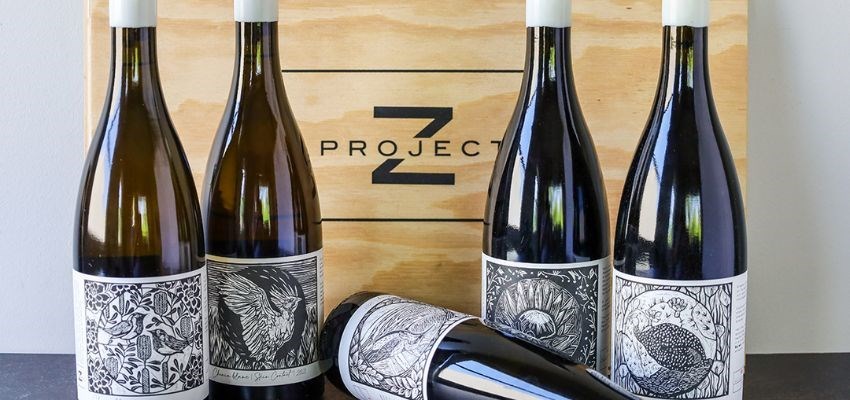
Vines are pruned, green buds start to shoot and the winelands are once again covered in a cloak of vibrant green. Theoretically, the cold, wet days of winter are past and warmer, longer days filled with new life and new prospects beckon. As does a new potential harvest.
So far, so optimistic. And there’s lots to be optimistic about. Recently I had occasion to sit with Kleine Zalze's cellarmaster RJ Botha to taste through some of the wines in their third iteration of Project Z.
“Project Z was never meant to be a commercial exercise,” Botha said. “The idea was to test new techniques, new methods of fermentation or of maturation –to see what the results would be.” The team focussed on vessels such as terracotta amphora and concrete eggs or tanks, whole cluster and skin ferments or extended macerations on white wines. Not everything worked but along the way they learned valuable lessons. And those have been expanded upon to improve the not insubstantial range that Kleine Zalze takes to market for the ultimate delectation of the consumer.
“The second dimension of Project Z was always to see what could be done to improve and raise the quality of the wines in Family Reserve, Vineyard Selection and Cellar Selection tiers,” he said. Kleine Zalze has an impressive track record for Chenin Blanc, for instance. (They are the single largest heritage or Old Vine wine producer in the country, they discovered.) On the evidence of tasting two separate Project Z “experiments” involving the grape – that reputation will soon be amped up a notch or two. Two Chenins were presented side-by-side: the first unwooded, fermented in a combination of amphora and unlined concrete egg – 30% and 70% – and then aged for 9 months in those respective vessels; the second was a purely amphora fermented and aged wine – but it was fermented on the skins for seven days. It too had a total of 9 months in amphora after fermentation.
They were significantly different wines – one taut, tangy, crisp and mineral with lime zest twists and a nervy energy, the other more textured, fuller-bodied and more broad-shouldered and powerful. There was discussion about how the juice was handled, “dirty” and oxidatively which – counter-intuitively – actually helps the wine develop in the long run.
This is all pretty geeky stuff, particularly to the woman in aisle 5 of the nearest supermarket who just wants a nice drop of white to go with the fish supper she has planned for the evening! Could she care less? Probably not. But Kleine Zalze care and their wine styles have evolved. GM Carina Gous said the first Project Z Chenin (taut and tangy) was the “polar opposite” of the Family Reserve Chenin (rich, ripe and full-bodied) – but because of what they’d learned from Project Z, the latter commercial range was evolving with time.
“The Grenache Noir was something attempted first in Project Z. The tiny volume we initially made for Z was exported to Japan. Now the wine is part of our Vineyard Selection range and is doing extremely well.” It’s made in not insubstantial volumes (30 to 40 000 bottles) and serious attention is taken in its vinification. Here comes the geeky detail: a 20% portion of the harvested grapes is put into tank as whole clusters; destemmed whole berries are then added on top of the bunches. The fermentation takes two weeks to complete and there are only two pumpovers per day. The goal is to retain as much of the vibrancy and freshness of the berried nature of Grenache – so only the free-run juice was transferred to a combination of older, third-fill French oak barrels and amphora for 10 months ageing. Voila!
No wonder consumers – including the woman in aisle 5 – are literally putting their money where their mouths are.
But this rising tide of quality is something I am not alone in having noticed over the past two months. Dr Winnie Bowman and I are part of the team of tasters for the Platter Guide and we have both remarked at the improvement across the board of the general standard or quality of SA wine.
Being the veterans that we are, we both conceded that five or 10 years ago we would have scored a number of dreary wines either one or one-and-a-half stars because they were poorly made, dilute, lacking character or the only redeeming feature was that it showed typical Vin 7 yeast notes! The past two months of tasting from the top to the bottom end of a range of producers, I don’t think I have scored any wine less than two or two-and-a-half. Wines from large commercial wineries, destined for local and overseas supermarkets have all shown the care taken in their preparation. Notes reflect that a variety of yeasts were used to inoculate the wines, some even mention using natural or spontaneous ferments, lees contact is de rigeur – even if it’s just for a portion of the final blend, wood maturation – be it oak barrels or even staves in tank – is cleverly rather than clumsily done.
So the use of what used to be special “geeky” or fringe techniques employed by boutique producers who only had a few hundred cases, has now become mainstream – and South African wine is all the better for it.
This article was originally published on WOSA's blog, Cape Chatter.